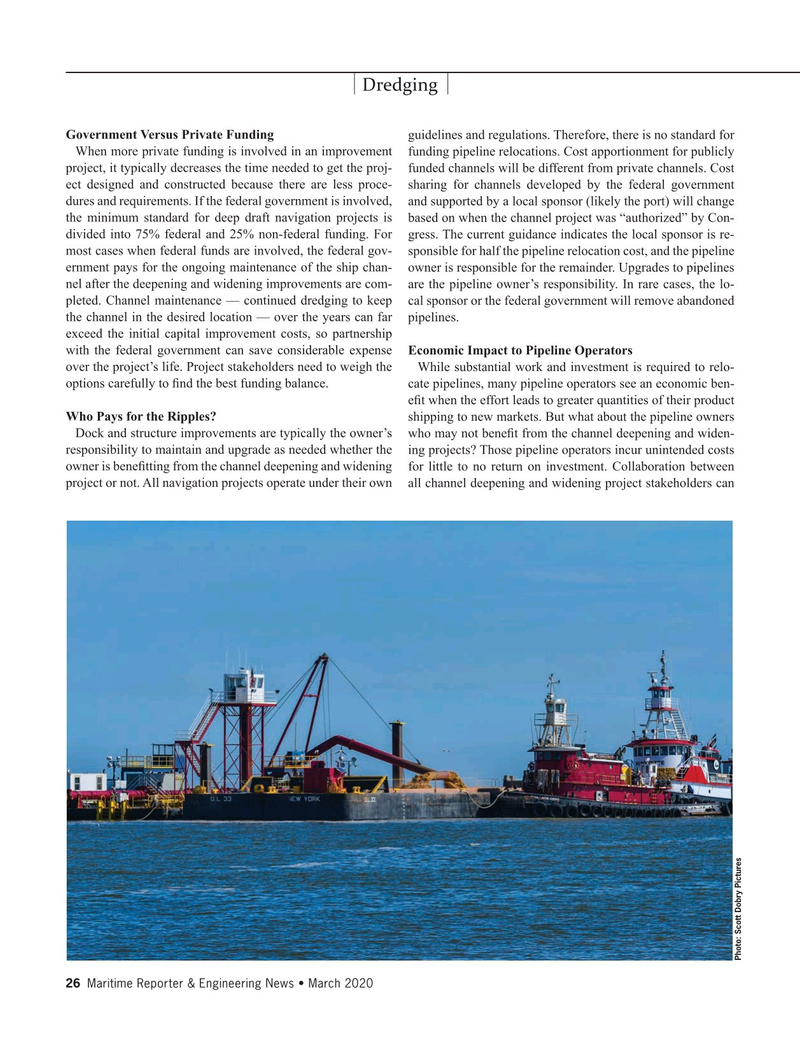
Page 26: of Maritime Reporter Magazine (March 2020)
Cruise Shipping Annual
Read this page in Pdf, Flash or Html5 edition of March 2020 Maritime Reporter Magazine
Dredging
Government Versus Private Funding guidelines and regulations. Therefore, there is no standard for
When more private funding is involved in an improvement funding pipeline relocations. Cost apportionment for publicly project, it typically decreases the time needed to get the proj- funded channels will be different from private channels. Cost ect designed and constructed because there are less proce- sharing for channels developed by the federal government dures and requirements. If the federal government is involved, and supported by a local sponsor (likely the port) will change the minimum standard for deep draft navigation projects is based on when the channel project was “authorized” by Con- divided into 75% federal and 25% non-federal funding. For gress. The current guidance indicates the local sponsor is re- most cases when federal funds are involved, the federal gov- sponsible for half the pipeline relocation cost, and the pipeline ernment pays for the ongoing maintenance of the ship chan- owner is responsible for the remainder. Upgrades to pipelines nel after the deepening and widening improvements are com- are the pipeline owner’s responsibility. In rare cases, the lo- pleted. Channel maintenance — continued dredging to keep cal sponsor or the federal government will remove abandoned the channel in the desired location — over the years can far pipelines.
exceed the initial capital improvement costs, so partnership with the federal government can save considerable expense Economic Impact to Pipeline Operators over the project’s life. Project stakeholders need to weigh the While substantial work and investment is required to relo- options carefully to ? nd the best funding balance. cate pipelines, many pipeline operators see an economic ben- e? t when the effort leads to greater quantities of their product
Who Pays for the Ripples? shipping to new markets. But what about the pipeline owners
Dock and structure improvements are typically the owner’s who may not bene? t from the channel deepening and widen- responsibility to maintain and upgrade as needed whether the ing projects? Those pipeline operators incur unintended costs owner is bene? tting from the channel deepening and widening for little to no return on investment. Collaboration between project or not. All navigation projects operate under their own all channel deepening and widening project stakeholders can
Photo: Scott Dobry Pictures 26 Maritime Reporter & Engineering News • March 2020
MR #3 (18-33).indd 26 3/4/2020 10:01:29 AM

 25
25

 27
27
